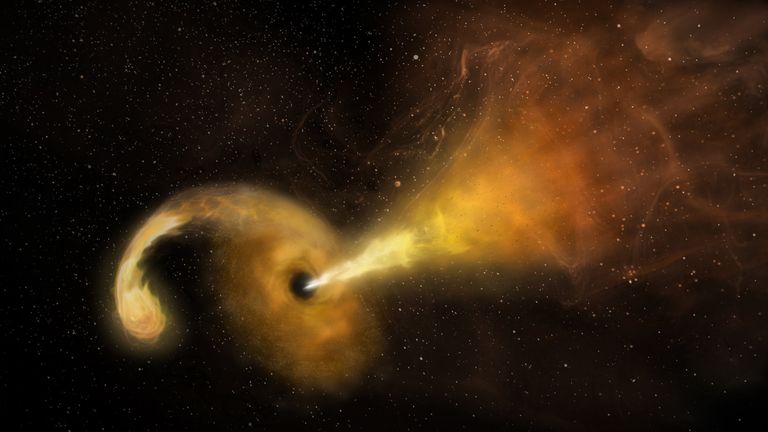The first black hole that humanity ever discovered is much more massive than previously thought, according to new research.
The galactic X-ray source, later named Cygnus X-1, was discovered in 1965, when a pair of Geiger counters were carried on board a sub-orbital rocket launched from New Mexico.
It was the focus of a famous scientific bet between physicists Stephen Hawking and Kip Thorne in 1974, with Professor Hawking wagering that it wasn’t a black hole.
Professor Hawking described the bet as “a form of insurance policy” in his book A Brief History of Time.
“I have done a lot of work on black holes, and it would all be wasted if it turned out that black holes do not exist,” he wrote. “But in that case, I would have the consolation of winning my bet, which would win me four years of the magazine Private Eye.
“If black holes do exist, Kip will get one year of Penthouse,” he added. In the end, Mr Hawking conceded the bet in 1990.
New observations published in the journal Science have now proven that he was right to do so.
The research has found that Cygnus X-1 contains the most massive stellar-mass black hole ever detected without the use of gravitational waves.
An international team of astronomers used the Very Long Baseline Array, a continent-sized radio telescope made up of 10 dishes spread across the US, together with a clever technique to measure distances in space to establish the black hole’s size.
“If we can view the same object from different locations, we can calculate its distance away from us by measuring how far the object appears to move relative to the background,” said lead researcher, Professor James Miller-Jones.
“If you hold your finger out in front of your eyes and view it with one eye at a time, you’ll notice your finger appears to jump from one spot to another. It’s exactly the same principle,” added Prof Miller-Jones, from Curtin University and the International Centre for Radio Astronomy Research (ICRAR).
“Over six days we observed a full orbit of the black hole and used observations taken of the same system with the same telescope array in 2011,” the professor said.
“This method and our new measurements show the system is further away than previously thought, with a black hole that’s significantly more massive.”
Co-author Professor Ilya Mandel from Monash University said the black hole is actually so massive it is challenging a lot of astronomers’ ideas about how black holes form.
“Stars lose mass to their surrounding environment through stellar winds that blow away from their surface. But to make a black hole this heavy, we need to dial down the amount of mass that bright stars lose during their lifetimes,” he said.
“The black hole in the Cygnus X-1 system began life as a star approximately 60 times the mass of the Sun and collapsed tens of thousands of years ago,” he said. “Incredibly, it’s orbiting its companion star – a supergiant – every five and a half days at just one-fifth of the distance between the Earth and the Sun.
“These new observations tell us the black hole is more than 20 times the mass of our Sun, a 50% percent increase on previous estimates,” Prof Mandel added.


